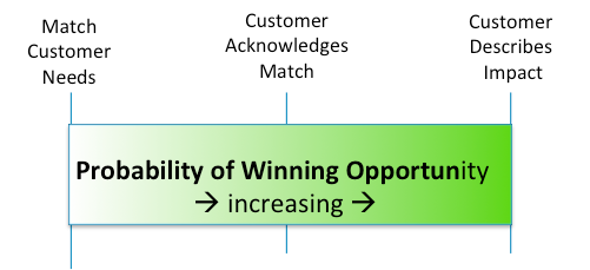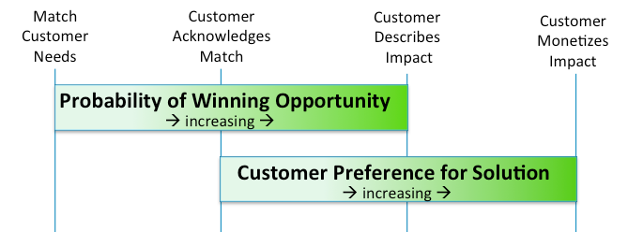Selling with Radical Value: How to Help Your Prospects Envision Payoff

In my first sales job out of college, my sales manager told us to “sell the value” of our proposal; this is always great advice but, in this case, not as actionable as a sales rookie needed. Most of us tended to “tell the value,” not sell it…and to confuse value with benefits.
A little later, I was lucky to work in a corporate culture with relentless focus on customer value: a culture that fully operationalized “selling full value.” Seeing the contrast between those environments was a true gift, and set me on a journey to learn even more about the topic, to build a training and consulting practice around it, and ultimately to write this book.
To average-performing organizations, “selling value” is a sales conversation uncovering a value driver, having a customer acknowledge that your offer provides an outcome they value, and maybe share the impact that value has on their organization…rinse and repeat with new value drivers – stopping once you know they will buy when the decision team is ready. Average organizations provide salespeople with likely value drivers, qualification questions to uncover them, and sometimes an ROI calculator tool.
However, above-average organizations give better tools and training to make “value conversations” more consistent and repeatable, often via sales training events in which a role-played customer acknowledges and validates those value drivers and their impact on them.

The principles of basic value selling.
Note: The entire (and critical) process of uncovering needs precedes this diagram.
Sound pretty familiar? The above figure summarizes these kinds of programs, emphasizing that the end goal is simply winning the sale. This kind of value selling falls short of what mission-critical selling requires, and that impacts your top – and bottom – line.
Let’s discuss a few major areas of difference, and why they are important in selling…but critical to an organizational focus on customer value.
Sellers should never settle for understanding approximate value
There is a major difference in the prospect’s mind between “acknowledging the value of the outcome” your offer produces for them, and “quantifying the monetary impact for themselves.” The level of mental engagement with the value creator and outcome is much less when you let the prospect off the hook by merely acknowledging. It’s better to get the prospect to “think beyond the sale” by envisioning a payoff – but far better still is when a seller drives customers to tell themselves such a detailed story that they can monetarily measure impact.

One reason for going beyond basic value selling
Psychologists and consumer choice researchers call this “the availability heuristic.” It basically says that people give more weight to something when:
- It is more easily recalled – more firmly carved into their memory.
- Specific consequences surrounding a choice are more easily recalled.
- It was more recently learned or processed. Tactical considerations around achieving recency in the decision process are important.
Your offer has the greatest value when it’s more vividly envisioned, recalled, and considered. Sell beyond simply envisioning consequences – all the way to envisioning consequences in monetary detail (including the intermediary steps). Consequences thus become more memorable, more available, and therefore gain weight in a customer decision.
Mark Boundy is the owner of Boundy Consulting. To purchase this book, go to https://amzn.to/2Q7txc9 or visit https://boundyconsulting.com/book-launch/.
Get our eNewsletter
Get the latest sales leadership insight, strategies, and best practices delivered weekly to your inbox.
Sign up NOW →